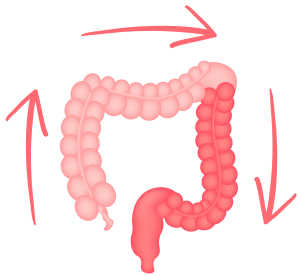11
Treatment Methods
Interventions for pelvic floor dysfunction may include, but are not limited to:
| Breathing | Bio-feedback | Corrective exercise | Education |
| Ergonomics | Fluid management | Habit retraining | Kegels |
| Lymphatic drainage | Manual treatments | Mental health activities | Mindfulness techniques |
| Myofascial release | Physiological and social support | Posture | Relaxation |
| Sensory integration | Stress management | Stretching | Tools (dilators, wands, etc.) |
Is internal work necessary?
It depends! Internal assessment and treatment are valuable in clinical practice, offering insights into a patient’s condition and guiding therapy. However, patients may prefer alternative approaches for reasons like comfort or personal beliefs. Incorporating methods like external assessments and holistic therapies can enhance outcomes and support patients. By providing a variety of options, clinicians can better cater to individual preferences and create a more collaborative therapeutic environment.
Note: Continuing education and training is needed to do internal work. Examples of continuing education courses could include Herman and Wallace’s Pelvic Function Level 1
Devices that may be used internally:
- Biofeedback
- Dilators
- Vaginal weights
- Wands (vibrating, thermal)
Kegels
What are kegels?
Kegel exercises strengthen a weak pelvic floor but are unsuitable for a tight or hypertonic pelvic floor, which may worsen symptoms. Individuals with hypertonicity should focus on muscle relaxation techniques rather than Kegels and may benefit from internal massage and education on pain management.
When teaching Kegel exercises, emphasize the importance of squeezing and lifting the pelvic floor simultaneously. Encourage patients to visualize actions that engage these muscles, such as trying to stop gas or urine flow. Ensure they do not practice Kegels while urinating, as this can confuse pelvic floor signals.
If discomfort arises during Kegels, it may indicate excessive tension and warrant alternative methods, like deep breathing or mindfulness practices. Adapting techniques to individual needs promotes better pelvic floor health. This video (video 1) provides a detailed demonstration on how to effectively perform a kegel exercise. It emphasizes the importance of both squeezing and lifting, while engaging the muscles of the pelvic floor from the front to the back for optimal results.
Are kegels appropriate for all patients?
It depends! Kegel exercises can be challenging for patients, especially if they lack proper instruction or understanding, as the pelvic floor muscles are internal and hard to visualize. Over 30% of women seeking help for urinary incontinence have difficulty activating their levator ani muscles, often engaging other muscle groups instead. This highlights the importance of guidance in effectively strengthening the pelvic floor. While Kegels can help some, they shouldn’t be the sole focus; training the inner core muscles (diaphragm, transverse abdominals, multifidus) along with additional techniques like targeted exercises, manual therapy, dietary adjustments, and posture education often leads to better outcomes.
Alternatives to kegels:
Kegel exercises are beneficial for strengthening the pelvic floor, but there are alternative exercises that can enhance both pelvic floor and core muscle strength.
 For example, squats engage the lower body and activate the core, promoting pelvic stability. The cat-cow stretch improves spine flexibility while encouraging synchronized breathing, enhancing pelvic floor engagement. Bird dogs also foster stability and balance by coordinating the upper and lower body through arm and leg movements.
For example, squats engage the lower body and activate the core, promoting pelvic stability. The cat-cow stretch improves spine flexibility while encouraging synchronized breathing, enhancing pelvic floor engagement. Bird dogs also foster stability and balance by coordinating the upper and lower body through arm and leg movements.
Prioritizing proper breathing techniques during these exercises is essential, as it deepens the connection between the mind and body and places the pelvic floor in proper positioning, maximizing workout benefits.
Constipation:
 A beneficial technique for addressing constipation is the “I love you massage or ILU” massage, which focuses on the abdominal area. To perform this massage, start by placing your hands on your lower right abdomen, where the colon begins. Gently apply pressure and move your hands in a sweeping motion up toward your ribcage, then across to the left side, and finally down toward the lower left abdomen where the colon ends. This circular motion mimics the path of the colon and encourages intestinal movement. It’s important to use light, soothing pressure and to maintain a calm and relaxed environment, as this can enhance the massage’s effectiveness in promoting digestion and relieving discomfort associated with constipation. Regular practice of the ILU massage may contribute to improved bowel function and overall digestive health.
A beneficial technique for addressing constipation is the “I love you massage or ILU” massage, which focuses on the abdominal area. To perform this massage, start by placing your hands on your lower right abdomen, where the colon begins. Gently apply pressure and move your hands in a sweeping motion up toward your ribcage, then across to the left side, and finally down toward the lower left abdomen where the colon ends. This circular motion mimics the path of the colon and encourages intestinal movement. It’s important to use light, soothing pressure and to maintain a calm and relaxed environment, as this can enhance the massage’s effectiveness in promoting digestion and relieving discomfort associated with constipation. Regular practice of the ILU massage may contribute to improved bowel function and overall digestive health.
Exercises
Explore these courses to learn more about pelvic health in OT!
Key Takeaways
- Internal assessment and treatment are valuable tools, however, patients can benefit from other methods if they do not wish for internal.
Explore
References:
Core Exercise Solutiosn. (n.d.). Five ways to master pelvic floor strength by mastering a kegel. https://documentcloud.adobe.com/spodintegration/index.html#
Mojo Pelvic Health. (2021, August 5). Why kegels are not always the answer. https://www.mojoph.com/post/why-kegels-are-not-always-the-answer
Media Attributions
- Squat
- ILU massage
